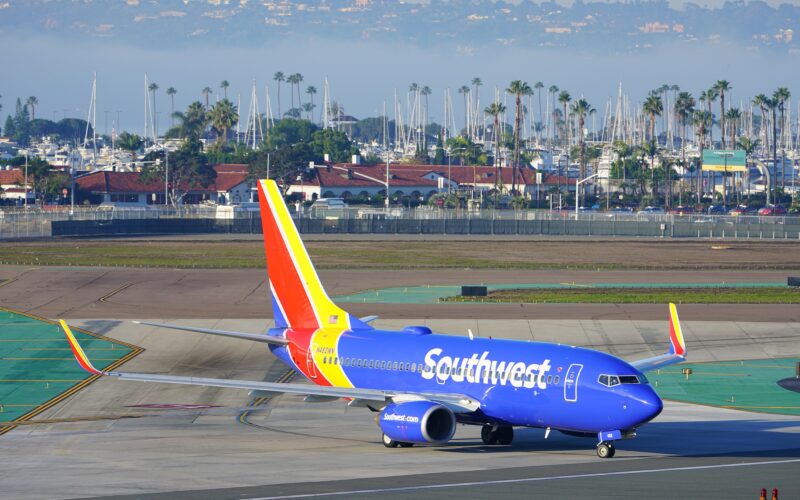The United States (US) National Transportation Safety Board (NTSB) has detailed that a Southwest Airlines Boeing 737-800 and a SkyWest Airlines Embraer E170 were separated 0.18 miles (289.6 meters) laterally and 200 feet (60.9 m) vertically during a runway incursion in June 2021.
The incident occurred at San Diego International Airport (SAN), when the Skywest Embraer E170, registered as N197SY, was told to Line Up and Wait (LUAW) on Runway 27. A Southwest Airlines Boeing 737-800, registered as N8674B, was cleared to land on the same runway by the local air traffic controller (ATC).
According to the NTSB, citing the Federal Aviation Administration’s (FAA) recordings, the 737’s flight crew was told to initiate a go-around on a 0.84-mi (1.3 kilometer) final, which was about 1.2 mi (1.9 kilometers) from runway 27’s threshold.
However, the transmission was blocked, resulting in the Southwest Airlines Boeing 737 not being able to hear the go-around instruction. 11 seconds before, ATC told the SkyWest Airlines crew to exit the runway via taxiway C2.
The Southwest Airlines pilots had to maneuver around the SkyWest E170, which was now exiting the runway, landing the 737 on runway 27. The NTSB detailed that the closest proximity between the two was 0.18 mi (289.6 m) laterally and 200 ft (60.9 m) vertically.
A subsequent review of the audio recordings indicated that the ATC warned the Southwest Airlines crew about potential traffic holding for take off on runway 27. Shortly after, the same controller issued flight instructions to aircraft that were not involved in the incident, including a helicopter passing through the same airspace.
“Just after the controller issued instructions for the SkyWest flight to exit the runway, and when the Southwest flight was on an approximate 1.2-mile final, the [Airport Surface Detection System – Model X (ASDE-X)] provided a mandatory go-around alert, and the controller issued go-around instructions to Southwest,” the NTSB noted in its report.
Additional communication distracting ATC
The NTSB also detailed that the Southwest Airlines Boeing 737-800 had to swerve to the left of runway 27, moving back to the right to align and land on the runway.
Meanwhile, the SkyWest Airlines crew told the NTSB they did not hear the go-around command to Southwest Airlines yet reported that they heard the 737 crew’s inquiry about an aircraft on the runway.
Per the report, the FAA detailed that after the Skywest Airlines Embraer E170 was told to LUAW, the controller turned their attention to the transitioning helicopter. “This additional communication likely distracted the controller from monitoring the position of the SkyWest and Southwest airplanes,” the NTSB noted.
Furthermore, the investigators noted that the FAA reported no irregularities with ATC communication at the time of the event, with the NTSB requesting a test of the strength of the radio signal from the tower at various locations throughout SAN.
“However, there was no indication that the FAA was able to conduct such testing and therefore it could not be conclusively determined if the control tower’s frequency strength was adequate to overpower an airborne aircraft’s transmission for other aircraft operating on the airport,” the NTSB said.
As such, the NTSB concluded it was likely that the transmissions from the controller and the Southwest Airlines crew canceled each other out, without the knowledge of any of the three parties involved in the incident.
According to the investigators, the probable cause was the blocked go-around instruction, resulting in the Southwest Airlines Boeing 737 continuing its landing attempt. This resulted in a loss of separation between the Boeing 737 and Embraer E170, with a contributing factor being “controller’s distraction communicating with a helicopter transitioning the airspace”.
No injuries were reported to the 177 Boeing 737 or 77 Embraer E170 occupants.

